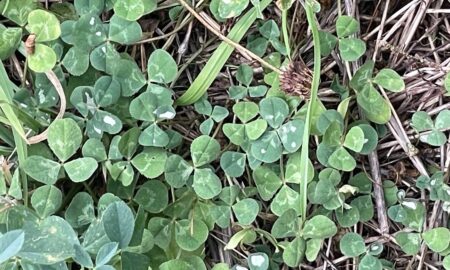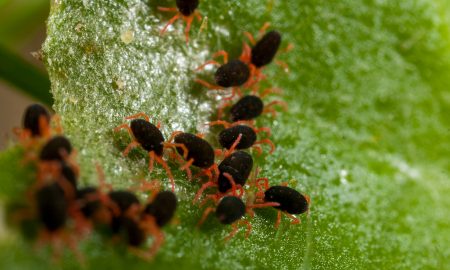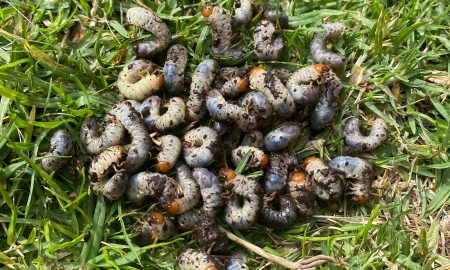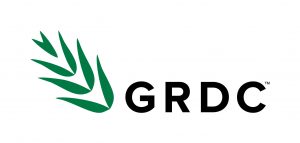Reports to PestFacts south-eastern indicate that very high numbers of web-spinning moth larvae are currently present in some paddocks in southern and central New South Wales. Based on their behaviour and general appearance, the weed web moth, Achyra affinitalis, is the prime suspect.
Larvae have been seen feeding on establishing canola, lucerne and broadleaf weeds in the Riverina, South West Slopes, and Central West Slopes and Plains.
The weed web moth is a native moth species and like many Australian native insects, has not been subject to much research, locally or internationally.
Nevertheless, here we outline the best available information on the weed web moth:
Key identification features
Weed web moth larvae are slender, hairy, and can vary in colour between grey-green, dark-green or pale brown. They have a black head and older larvae have a dark stripe down the middle of their back with three rows of small dark spots on each side.
Weed web moth larvae generally don’t grow to be very large. Past records document weed web moth larvae as growing to 15 mm. However, this season, several larvae have been measured up to 20 mm, and even 35 mm long in some instances.
The weed web moth spins a web on plant foliage that can bind leaves together. This webbing is often noticed before the larvae themselves.
Weed web moth larvae wriggle violently when disturbed. Larvae can also be very active and crawl rapidly.
As adults, weed web moth have a 20 mm wingspan and are buff coloured with darker brown or reddish flecks, mainly on the forewings.
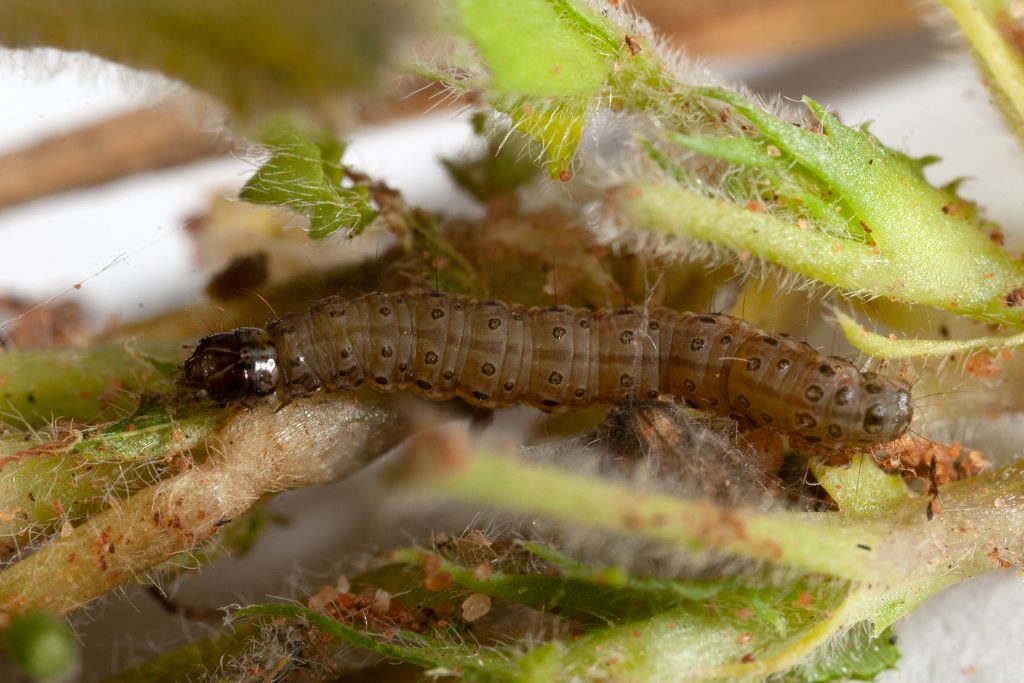
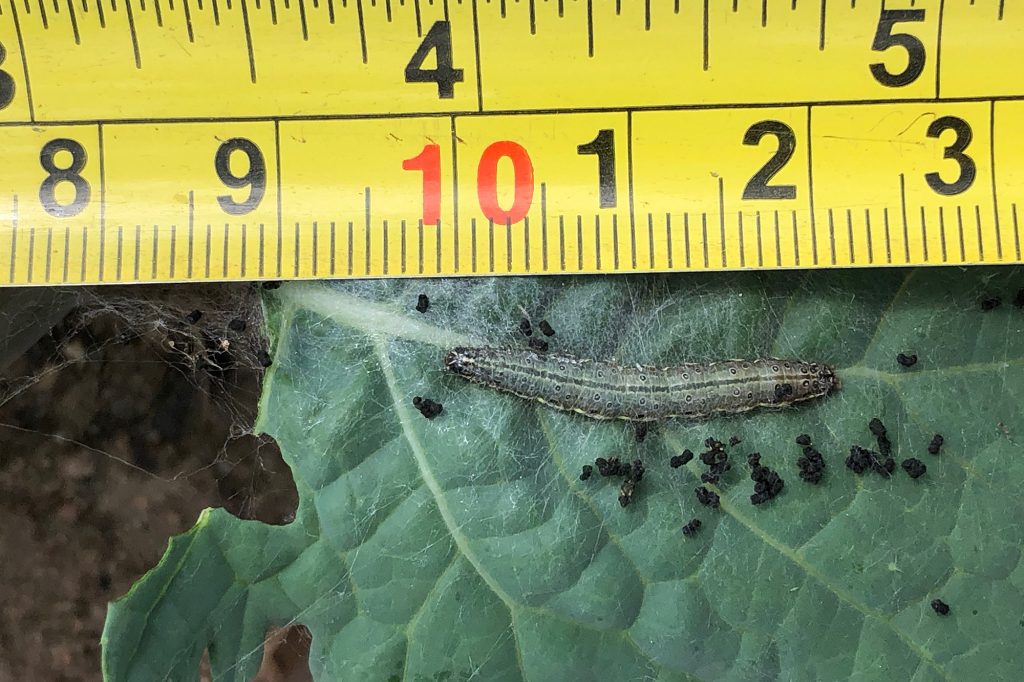
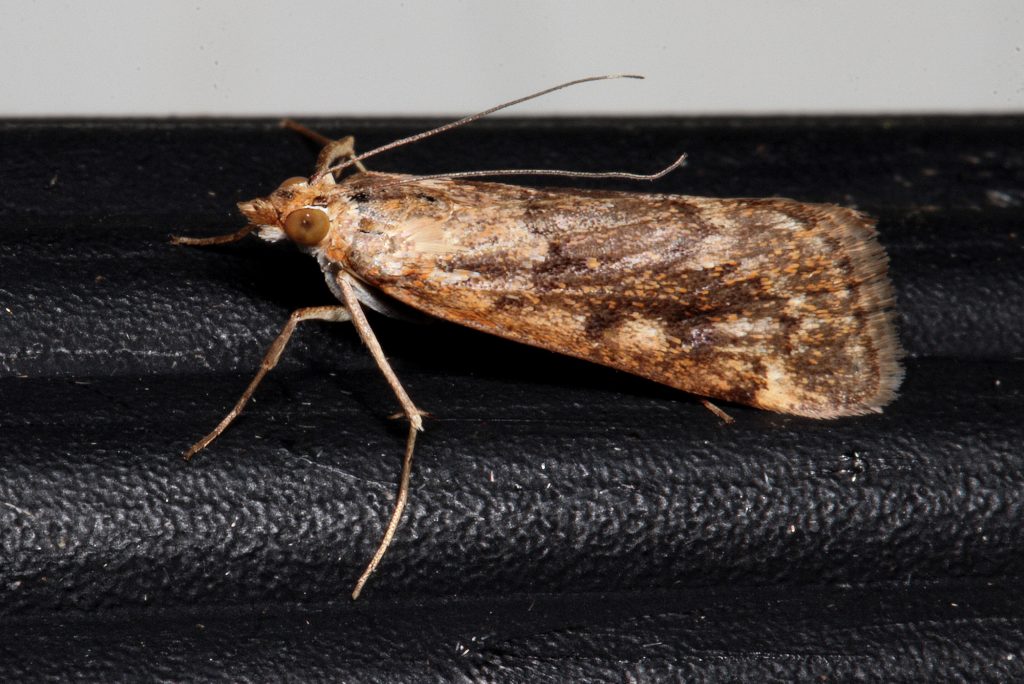
Host range
Weed web moth larvae is known to feed on lucerne, canola, medic, soybean, cotton and lupins. They have been seen moving off pasture paddocks, particularly those with a broadleaf weed component.
The larvae seem to enjoy eating a wide range of broadleaf weeds. Reported weed hosts include mintweed (Salvia reflexa), khaki weed (Alternanthera pungens), Bathurst Burr (Xanthium spinosum), roly-poly (Salsola tragus), boxthorn (Lycium ferocissimum), and goosefoot (Chenopodium sp.).
Feeding symptoms
In vegetative crops, weed web moth larvae shred foliage, creating a skeletonised appearance. Feeding can be severe enough that leaves are defoliated and the plant dies.
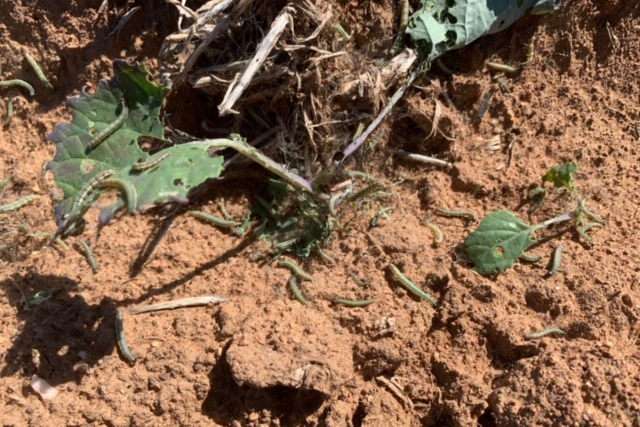
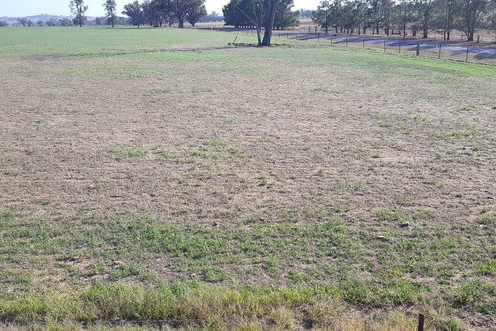
Management
Weed web moth has long been considered a sporadic and minor pest; the numbers and incidences recently reported by agronomists is unusual.
Nevertheless, chemical control can be warranted when numbers are high.
There are registered chemistries available. Keep in mind that that weed web moth has another common name, cotton webspinner and may listed under ‘webspinner caterpillar’ on labels. Weed web moth larvae are reportedly stubborn to kill at times; do not cut label rates.
If spraying weed web moth this season, we encourage spot or border spraying where possible to help preserve beneficial, natural enemies in paddocks.
As an insect without much research behind it, we know very little about what biological controls help supress weed web moth. Nevertheless, it likely does have natural enemies.
For example, ants have been spotted attacking the larvae as shown below.
For crops that will be sown in April and May, control broadleaf weeds and crop volunteers in and around paddocks prior to sowing. It is important that there is a break of at least 2 weeks before sowing, in which there is no green material remaining to harbour pests. In practise, this means controlling weeds 4 – 6 weeks before sowing. This will help to prevent weed web moth larvae moving off weeds onto vulnerable seedlings.
Acknowledgements
Thanks to the following people for providing field observations: Chris Turner (Nutrien Ag Solutions), Phil Bowden (Bowden Rural Services), Greg Parker (AGnVET Services), the Grassroots Agronomy team, Barry Haskins (Ag Grow Agronomy and Research), Tim Condon (Delta Agribusiness), Andrew Daley (Premier Advisory), and Bob Ronald (Nutrien Ag Solutions).
Cover image: Photo by Greg Parker


